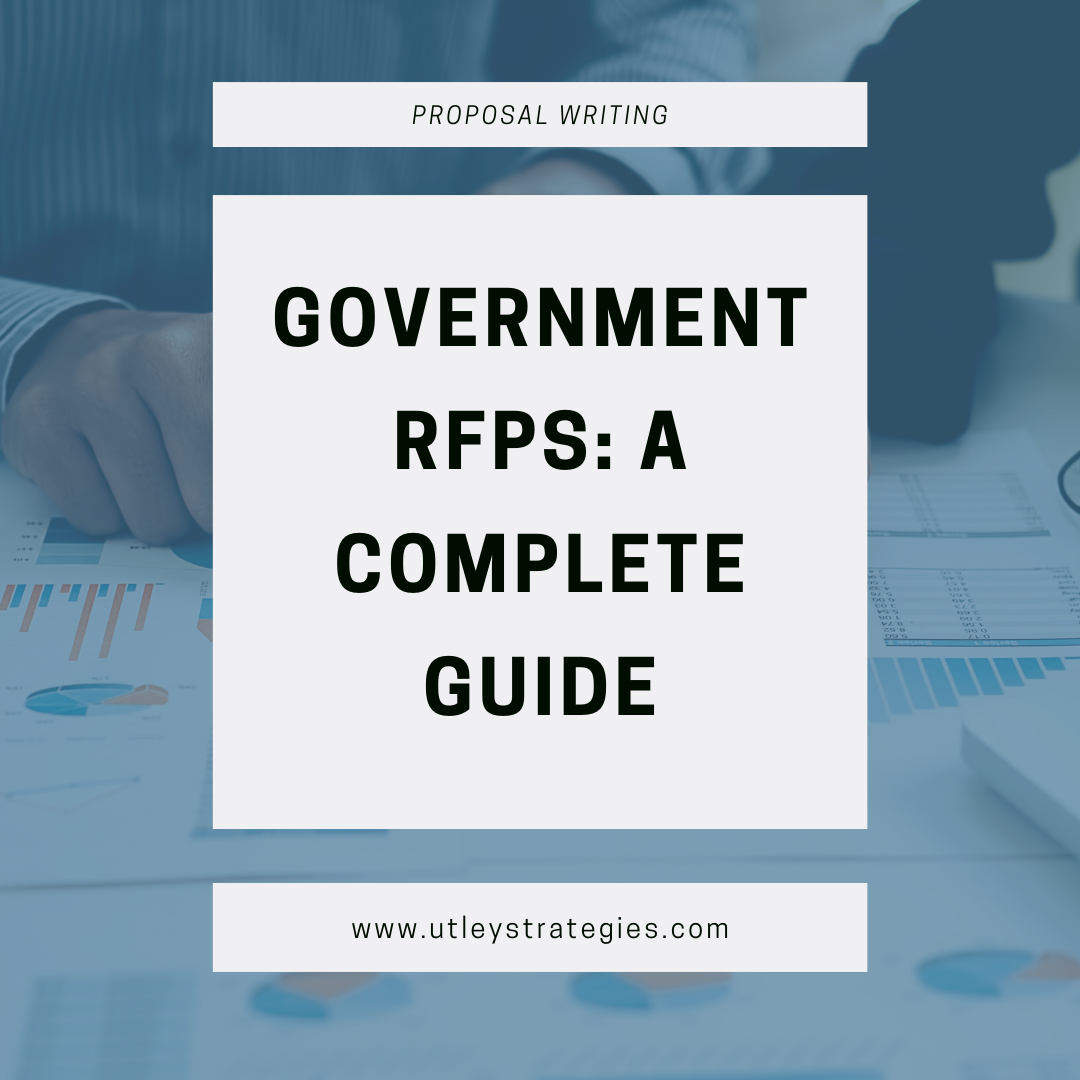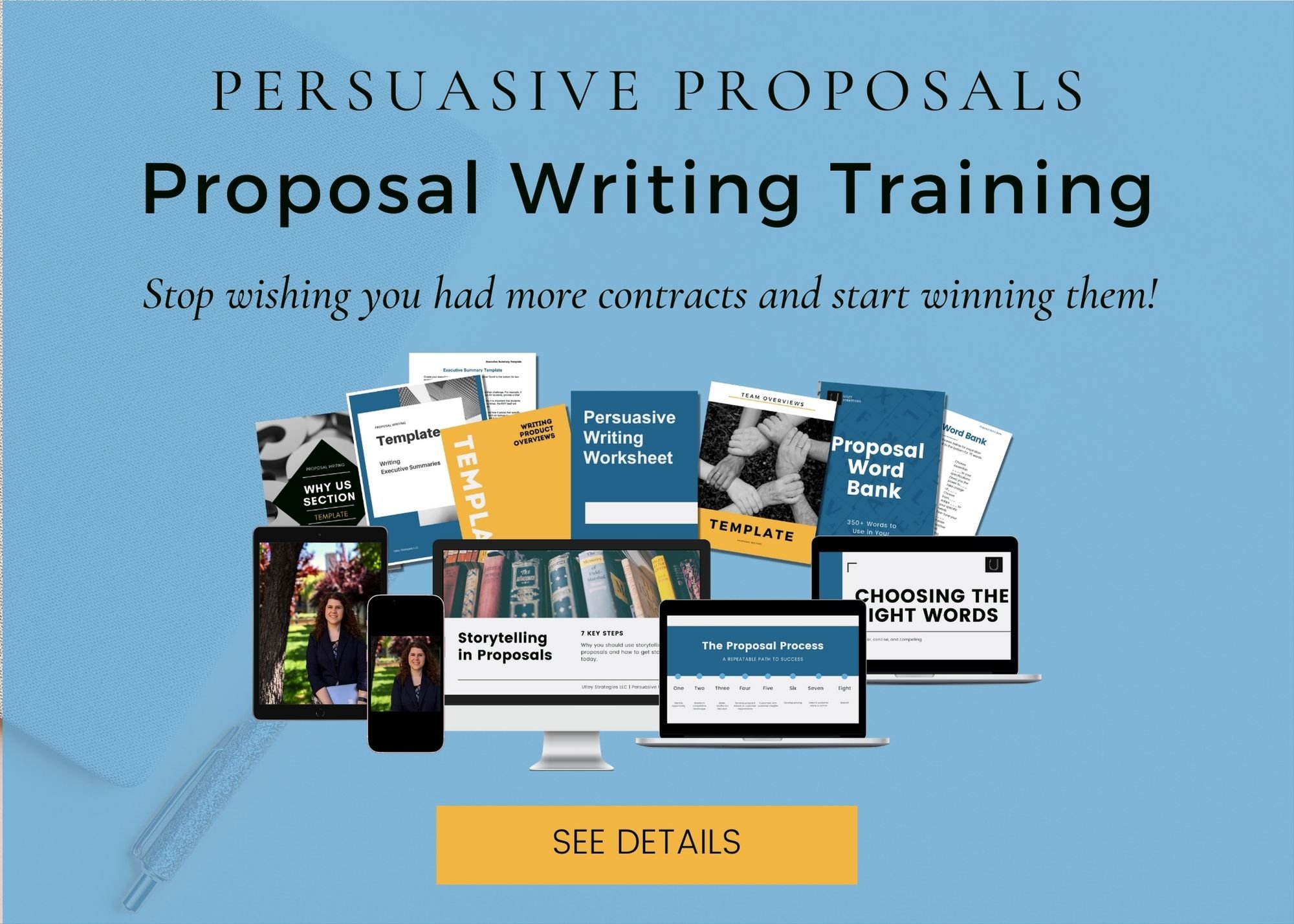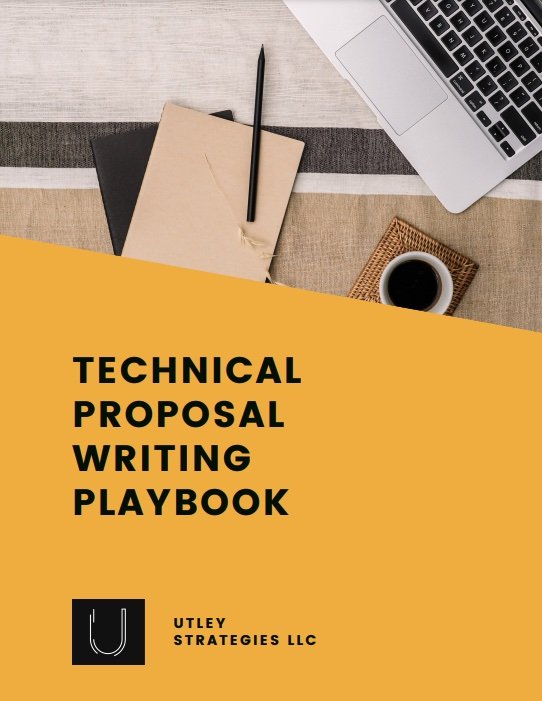Complete Guide to Government RFPs: Where to Find & How to Win
Winning government contracts is one way small businesses hope to grow. Many times, holding a government contract means stable, consistent income, and the contract opens doors to new contracts, which snowball from there.
With more than $120 billion dollars in prime federal contracts going to small businesses in 2018, it’s no wonder that many businesses hope to replicate this approach. If this is your first time trying to win a new government contract, read on to learn more about the process and what you can do to win.
Requests for Proposals: Overview
Before we dive into government RFPs, let’s first define RFP. RFP stands for Request for Proposal, which is different from an RFI (Request for Information) or RFQ (Request for Quote or Qualifications). While this post focuses on government RFPs, the RFP process is similar across all industries. First, the organization identifies a problem, and once they have done a bit of research, they may release an RFI to learn more about potential solutions in the market (and sometimes to get an idea for pricing). They will use this information to decide more concretely what they want, and create a formal Request for Proposal solicitation asking potential vendors to submit proposals for the project. Almost every RFP will include a question and answer period, a hard deadline for when proposals are due, and some sort of guidance on what information you need to provide. Many will specifically state a format and ask that you respond to specific questions.
Government RFPs
Government RFPs follow the same process as described above with one key caveat: while private companies can send the RFP to only the companies they want to submit proposals, government agencies are required to publicly announce their solicitations so any qualified bidder can respond. This means that anyone (i.e. your competitors) can find the RFP and create a response. This level of competition combined with the often strict evaluation processes for government organizations makes your proposal writing critical to winning the contract.
Lowest Price Technically Compliant vs. Best Value
When trying to win government contracts, it is critical that you know how the proposals will be evaluated. There are typically two main ways: Lowest Price Technically Compliant or Best Value. Lowest Price Technically Compliant evaluations means that whichever bidder has the lowest price while meeting the technical requirements will receive the contract. Even if your competitor is only one dollar less than you and you offer more value-adds, they will be awarded because they meet the requirements and are the lowest priced. Unsurprisingly, these types of proposals are very competitive on price and often result in companies racing to the bottom by cutting margins to be the lowest priced. If you are already often the highest bidder, then it’s best to avoid these types of solicitations unless the contract is strategically important.
Best Value opportunities, on the other hand, are evaluated based on overall value. Most often these types of evaluations place different points or weight value onto each evaluation criterion, and the bidders with the highest scores are invited to present or negotiate (or sometimes submit a Best and Final Offer). In this type of solicitation, your proposal becomes even more important because you are able to showcase why your company is better in each category, which will ultimately result in a higher overall score, even if you are the highest priced.
How do you know if a specific RFP is Best Value or Lowest Price Technically Compliant? Many times the RFP will say, especially for federal opportunities. For other types of RFPs, they may not specifically use these terms, but most will have a section describing how they will evaluate proposals. Always review this before you start working on your proposal as it will affect how you respond. Many companies will only respond if a solicitation is best value because they know that they will not be the lowest-priced and would prefer to spend time on proposals they can win. The decision depends on your company goals and how you compete.
Federal Government
Responding to federal government projects is highly competitive and often a time-consuming process. Before you decide to pursue a federal contract, it is important to familiarize yourself with the Federal Acquisition Regulation (FAR) standards as you will have to meet them once you hold the contract. After reviewing a few federal solicitation listings, you will see that they follow a similar format and ask for similar information. Once you have responded to a few federal RFPs, you will quickly learn the format and become more efficient at developing your responses.
State and Local Governments
For State and Local government RFPs, however, there is no standardized format. Each agency has its own standards, and sometimes that even varies for each solicitation. Don’t let this discourage you though! Unlike federal RFPs, you don’t have to know the “standard” format used to create your responses. Instead, all of the information you need will be within the RFP document. Most organizations are good about describing exactly what you need to include, any specific formatting requirements, and how they will evaluate.
Additional Government Agencies
In addition to federal, state, and local governments, there are other agencies that are public or semi-public that are held to similar procurement standards. For example, public universities, K-12 school districts, and some healthcare research institutions all release public RFPs because they use public funds (i.e. taxpayer dollars) to purchase the services or products. These tend to be more similar to state and local procurements unless they are federal organizations, which would follow federal procurement processes.
Cooperative Purchasing Agreements
Many government agencies choose to use cooperative purchasing agreements to receive better pricing and already agreed-upon contracting. GSA is the most famous cooperative agreement run by the federal government. Other cooperative purchasing organizations include NCPA, NASPO ValuePoint, and National IPA (now known as OMNIA Partners, Public Sector). There are also many local purchasing agreements at the state level and sometimes between a few states.
By joining one of these cooperative purchasing agreements, your organization cuts down on some of the administrative bidding requirements, such as contract negotiations and developing pricing. Some agencies purchase exclusively from these agreements for certain procurement needs, which will give you access to a less competitive pool once you are on the contract. Many of these agreements are competitive to join and will require planning and well-developed proposals to win.
Writing Winning Proposals for Government Agencies
Now that you know more about government RFPs, let’s talk about how you actually win those government contracts.
As mentioned above, these solicitations are often very competitive, but if you find a Best Value RFP where you know your company is a perfect match, there are steps you can take to make your proposal stand out from the competition.
Identify and Address Their Needs/Challenges
When creating your proposal content, it is important to always focus on the buyer’s specific needs or the challenges that they are trying to solve. While it may be tempting to write a 30+ page document that’s focused on your company, that is not the way you will win the contract.
Instead, write about how working with you will make life easier for the customer. Highlight any key differentiators, and go into detail on what awarding the contract to you will look like. This not only provides the evaluators with a clear perspective of what you will do, but it makes you more trustworthy and transparent, which is important when signing a contract that can last multiple years.
Highlight Past Experience
Just like if you were interviewing for a job, the evaluation committee wants to know that you have done this work before or at the very least that you’ve completed something similar. Choose past examples that are with similar clients (or as similar as possible if you’ve never worked with government). Showcase how you solved similar problems to what this customer is currently experiencing, and include resumes of your experienced team members who will be on the project to reassure them that you will do a good job. Time and space permitting, you can even include past client testimonials where they discuss how working with your company allowed them to overcome similar challenges. While testimonials might not be part of the strict “evaluation criteria”, it will help the evaluators to trust that you can do a good job, which will help your evaluation overall.
Bring in Partners
If you know an RFP is about to be released but you can only fulfill half of the requirements, start searching for partners. It’s very common for multiple companies to join together to fulfill a government contract, and, if you aren’t a women-, veteran-, disabled-, or minority-owned business, then you likely will need to partner with one at some point to fulfill diversity goals. If you plan to work in the government space, start forming relationships with these types of companies that you can partner with on future projects, and be prepared to address this within your proposal.
Address all Requirements
One popular mistake when responding to RFPs is to not go into the level of detail that is requested. If there are specific questions asked in the RFP, create a point-by-point response where you copy the questions from the RFP into your template, and then you respond with your answer directly below each question. While it may not be the most on-brand or beautiful format, this approach ensures that the evaluators know exactly where to find your answers, which makes evaluation easier and is better for your proposal overall.
Know the Competition
This is one of the most critical steps in creating competitive government proposals. As soon as possible, find out how your key competitors pitch within their proposals and develop a strategy that helps your company to stand strong against their pitch. If you aren’t sure how to do this, you can use past government RFPs to request their proposals and actually see what they create.
In addition to proposal research, review all information that they have online about their offerings. Document key phrases or differences between their pitch and yours. If possible, attend a webinar or other event to see how they interact with clients. Use all of this information to create a competitive position outlining strengths and weaknesses for both you and the competitor to use when you are responding against them for RFPs.
Download the *FREE* Technical Proposal Writing Playbook to improve your proposals today!
Next Steps to Win Government Contracts
To summarize, below are the key steps to take to prepare your proposal.
Find Government RFPs.
Government RFPs are, fortunately, much easier to find than RFPs in other sectors. There are many places to find government RFPs, from searching your local government’s procurement page to robust databases like Periscope S2G (formerly BidSync). There are many options to find opportunities that align with your business.
Review Bid documents.
First, review all of the bid/RFP documents. Determine how the proposals will be evaluated (i.e. Best Value, etc.). Find the deadline, submission requirements, technical requirements, and any other information that will help you decide if this is a good opportunity to pursue.
Determine Go/No Go.
After reviewing the documents, it’s time to decide if you will respond to the RFP. Make this decision as quickly as possible as many RFPs have short deadlines. Developing a scoring process can help provide a streamlined and more unbiased approach to determining the best proposals for your organization.
Create Proposal Development Plan & Schedule.
Once you decide to respond to an RFP, develop a plan for how to create your proposal with key deadlines. If possible, assign a proposal manager who will project manage the proposal creation to ensure all requirements are met and that content advances according to the schedule. When developing the schedule, start with the RFP deadline and work backwards. Almost always you will find that there is actually less time than you planned. Keep in mind any production requirements, allow time for reviews, and if you have approvals, account for those in your timeline. If in doubt, assume it will take longer than planned so you have extra time if needed.
Write Proposal Content.
With a plan in place, it’s time to start the proposal writing! If you have a team of proposal writers, they will lead this part. If not, then assign out key sections to relevant team members, but try to have one person review the final draft to ensure the document is more cohesive (rather than a mismatch of many different voices). When creating content, focus on the evaluators’ requirements, avoid using too much jargon, and always directly answer questions (unless it’s a strategic decision to not do so). For example, if the question is “Do you provide customer support?” respond with “Yes, we provide customer support 24x7x365.” so there is no confusion.
Conduct Final Review.
When the near-final draft is ready, it’s time to have a final review. This might be something as complex as a full Red Team or it may simply be rereading content that you created. Either way, make sure that you always conduct a final readthrough. If possible, have another team member read through the document to ensure clarity or hire an editor.
Submit per RFP Requirements.
With the review complete, it’s time to submit your proposal! Every RFP will say how they want to receive proposals, and you should follow these requirements exactly. Some organizations require hard copies (yes, it’s true; they may even require 20 duplicates for the whole evaluation team!). Fortunately, many organizations today accept email or other forms of electronic submissions. You may also be required to package pricing separately. It’s best to know the submission requirements early in the process so you can plan for shipping times, gathering any special materials, or engaging help as needed.
Prepare for Negotiation.
Once the proposal is submitted, celebrate! After that, prepare for a negotiation. You may be invited to a presentation to talk through your proposal in more detail. Some organizations will move straight to the negotiation phase after the RFP. It varies based on the type of product or service being procured and the agency’s internal processes. Either way, keep in mind that there might be another step before you find out if you won the contract.
Request a Debrief.
Win or lose, requesting a debrief with the customer can help you learn what to do better next time. Most government agencies will release the bid tabulations (sometimes you have to ask), which will allow you to compare how you scored against other companies. Use this information to refine your sales and proposal process.
Try again!
Even the largest companies frequently lose proposals, so don’t be discouraged if you do too! RFPs are highly competitive, but they can be highly rewarding. Unfortunately, the only way to win large government contracts is to create a winning proposal. You can always bring in help to navigate the process, and soon you’ll start seeing your win rates increase.






